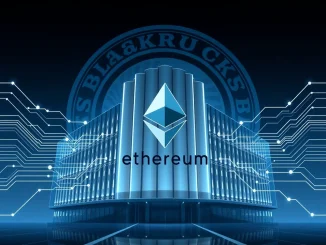
Exciting news for the Ethereum community! The much-anticipated Pectra upgrade is taking a significant leap forward with the launch of the Hooli testnet. If you’re invested in the Ethereum ecosystem, or simply intrigued by the future of blockchain technology, this development is something you absolutely need to understand. Let’s dive into what this means for Ethereum and the broader crypto landscape.
What is the Ethereum Pectra Upgrade and Why Does it Matter?
The Ethereum Pectra Upgrade is the next major network upgrade planned for the Ethereum blockchain. Think of it as a significant software update for your computer, but on a massive, decentralized scale. These upgrades are crucial for the continuous evolution and improvement of Ethereum, ensuring it remains competitive and addresses the evolving needs of its users and developers.
Why is Pectra so important? In a nutshell, it’s designed to:
- Enhance Speed and Efficiency: As the blockchain space grows, transaction speed and network efficiency become paramount. Pectra aims to optimize Ethereum’s performance, making transactions faster and more cost-effective.
- Boost Smart Contract Capabilities: Smart contracts are the backbone of decentralized applications (dApps) on Ethereum. Pectra will introduce new features and improvements to make smart contracts more powerful, versatile, and secure.
- Maintain Competitiveness: The blockchain arena is fiercely competitive. Numerous blockchains are vying for dominance, each offering unique features. The Ethereum Pectra Upgrade is vital for Ethereum to maintain its leading position and attract developers and users.
Think of it this way: Ethereum is like a bustling city. To keep the city thriving, you need to constantly upgrade its infrastructure – build better roads, improve public transport, and create more efficient systems. Pectra is essentially Ethereum’s infrastructure upgrade.
Hooli Testnet: The Final Frontier for Pectra
Before any major upgrade is rolled out on the main Ethereum network (mainnet), it undergoes rigorous testing on dedicated test networks, or testnets. These testnets are like sandboxes where developers can experiment, identify bugs, and ensure everything works smoothly without risking the main network.
The Hooli testnet is the latest and, hopefully, final testing ground for the Pectra upgrade. It’s crucial because:
- Final Stage Testing: Hooli is designed to be the last major testnet before Pectra is considered ready for mainnet deployment.
- Addressing Past Issues: Previous test runs on Sepolia and Holesky testnets encountered configuration issues, causing delays. Hooli aims to overcome these hurdles and provide a stable testing environment.
- Real-World Simulation: The Hooli testnet mimics the conditions of the Ethereum mainnet, allowing for realistic testing of Pectra’s features and performance under stress.
The launch of Hooli on March 26th marks a critical milestone. If testing on Hooli proceeds smoothly, we could see the Pectra upgrade go live on the Ethereum mainnet as early as late April or early May. This timeline, however, is contingent on the success of the Hooli testnet phase.
Boosting Ethereum’s Speed and Efficiency: What Pectra Promises
One of the core aims of the Pectra upgrade is to significantly enhance Ethereum’s efficiency and transaction processing speed. In the world of blockchain, speed and efficiency are not just desirable – they are essential for scalability and user experience.
Here’s how Pectra is expected to boost efficiency:
| Aspect | Current Ethereum | Ethereum with Pectra Upgrade (Expected) |
|---|---|---|
| Transaction Speed | Variable, depending on network congestion | Improved, aiming for faster confirmation times |
| Gas Fees | Can be high during peak times | Potentially reduced due to optimized network efficiency |
| Network Congestion | Occasional congestion during high demand | Aimed to be mitigated through network optimizations |
While specific technical details of the speed and efficiency improvements are complex, the overall goal is clear: to make Ethereum faster, more responsive, and more user-friendly. This is crucial for attracting mainstream adoption and supporting a wider range of applications on the Ethereum blockchain.
Smart Contracts Revolution: Enhanced Features in Pectra
Smart contracts are self-executing contracts with the terms of the agreement directly written into code. They are a fundamental aspect of Ethereum and enable a vast ecosystem of decentralized applications (dApps), DeFi (Decentralized Finance), and NFTs (Non-Fungible Tokens).
The Pectra upgrade is set to bring exciting enhancements to smart contract functionalities, potentially including:
- Improved Security: Enhanced security features for smart contracts to minimize vulnerabilities and protect user funds.
- Greater Flexibility: New tools and functionalities for developers to create more complex and versatile smart contracts.
- Reduced Development Complexity: Streamlining the process of developing and deploying smart contracts, making it more accessible to a wider range of developers.
These improvements are not just incremental; they represent a significant step forward in making smart contracts more robust and capable. This could unlock new possibilities for dApps and pave the way for more innovative and impactful blockchain applications.
Navigating the Blockchain Competition: Pectra’s Role
As CoinDesk rightly pointed out, the Pectra upgrade is happening against a backdrop of intense blockchain competition. Ethereum is no longer the only player in the smart contract blockchain space. Blockchains like Solana, Cardano, Avalanche, and others are emerging, each with its own strengths and unique offerings.
Pectra is Ethereum’s strategic response to this competitive landscape. By focusing on efficiency, speed, and enhanced smart contract capabilities, Ethereum is aiming to:
- Retain Market Dominance: Maintain its position as the leading platform for dApps and the broader decentralized web.
- Attract Developers and Projects: Provide a compelling platform for developers to build innovative projects and for businesses to adopt blockchain solutions.
- Stay Ahead of the Curve: Continuously evolve and adapt to the rapidly changing needs of the blockchain industry.
The success of the Pectra upgrade is crucial for Ethereum to not only maintain its current standing but also to solidify its future in the face of increasing competition in the blockchain space.
Challenges and Roadblocks: What Could Delay Pectra?
While the launch of the Hooli testnet is a positive step, it’s important to acknowledge that challenges and potential roadblocks could still emerge, potentially delaying the Pectra mainnet launch.
These challenges might include:
- Unforeseen Bugs in Hooli: Despite rigorous testing, new and unexpected bugs might be discovered during the Hooli testnet phase.
- Configuration Issues: Similar to the problems encountered with Sepolia and Holesky, configuration complexities could arise again.
- Consensus and Coordination: Upgrading a decentralized network like Ethereum requires broad consensus among developers, validators, and the community. Achieving this consensus and coordinating the upgrade process can be complex.
- Security Vulnerabilities: Ensuring the security of the upgrade is paramount. Any identified security vulnerabilities would need to be addressed before mainnet deployment.
The Ethereum development community is known for its meticulous approach to upgrades. They prioritize stability and security above all else. Therefore, while the target timeline of late April or early May is optimistic, it’s crucial to remain aware that unforeseen issues could lead to delays. The key takeaway is that a successful and stable upgrade is more important than a rushed launch.
Actionable Insights for Ethereum Users and Developers
So, what should Ethereum users and developers be doing in light of the Pectra upgrade and the Hooli testnet launch?
For Ethereum Users:
- Stay Informed: Keep an eye on news and updates regarding the Pectra upgrade and the Hooli testnet progress. Reputable crypto news sources and Ethereum Foundation announcements are good places to start.
- Prepare for Potential Changes: While Pectra is designed to be a seamless upgrade, be aware of potential minor adjustments to transaction processes or gas fee structures post-upgrade.
- Engage with the Community: Participate in discussions on forums and social media to understand the community’s perspective and ask any questions you might have.
For Ethereum Developers:
- Test on Hooli: If you are developing dApps or smart contracts on Ethereum, leverage the Hooli testnet to test your applications and ensure compatibility with Pectra.
- Explore New Features: Familiarize yourself with the new features and functionalities introduced by Pectra and consider how you can incorporate them into your projects.
- Contribute to Testing: If you have the technical expertise, consider contributing to the Hooli testnet by running nodes or participating in testing efforts to help identify and resolve any issues.
Conclusion: The Future is Pectra
The launch of the Hooli testnet marks an exciting and critical phase in the journey of the Ethereum Pectra upgrade. This upgrade holds immense promise for enhancing Ethereum’s efficiency, speed, and smart contract capabilities, ensuring its continued leadership in the competitive blockchain landscape.
While challenges may still lie ahead, the dedication and expertise of the Ethereum development community provide confidence in the successful rollout of Pectra. For Ethereum enthusiasts, developers, and the broader crypto world, the Pectra upgrade represents a significant step towards a more scalable, efficient, and powerful Ethereum network. Keep watching this space – the future of Ethereum is unfolding with Pectra!



